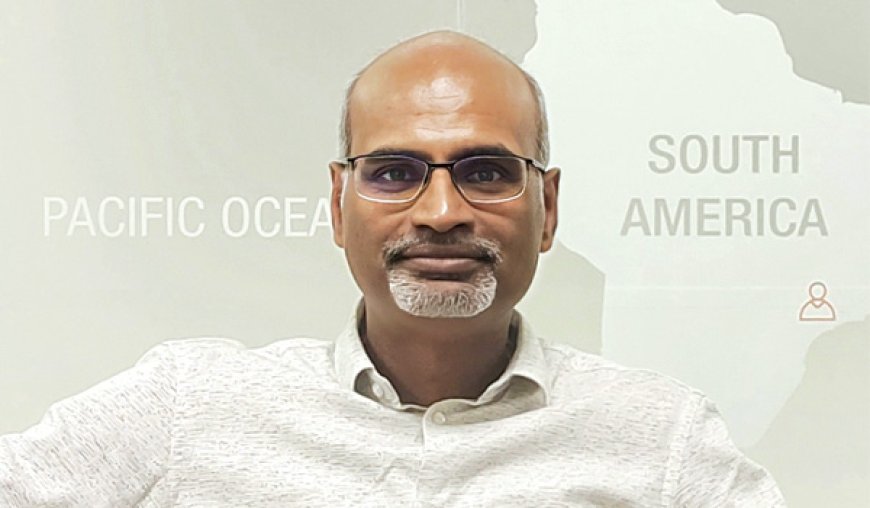Our goal is to transform our products into a quintessential ‘Made in India’ offering.
Ramarao Dasika, General Manager, PP Sales & Marketing, Bobcat India India is a very cost centric market. So, you have so much of machines and so many features, how do you balance between cost and quality? As acknowledged, the Indian

India is a very cost centric market. So, you have so much of machines and so many features, how do you balance between cost and quality?
As acknowledged, the Indian market highly values cost-effectiveness. However, our landscape also demands applications that necessitate robust, high-quality products. Our strength lies in the wealth of experience garnered over the years in product design, enabling us to achieve this level of excellence. Leveraging our international and global experiences, we replicate these standards in our manufacturing processes. Simultaneously, we prioritize indigenization in our product content, sourcing from high-quality suppliers within India. Our goal is to transform our products into a quintessential ‘Made in India’ offering. While we’re at the initial stages of this transformation, a significant portion of our machines already boasts over 70% indigenized content, ensuring a blend of global quality and indigenous components. This approach enables us to strike a delicate balance between delivering exceptional quality and maintaining cost efficiency.
There are a lot of projects happening. There is a boost in construction and infrastructure projects in the country in the past 5 years. So, how do you maintain the scalability to meet your demand for your products?
We’ve witnessed a significant surge in demand, particularly post-Covid, especially in infrastructure projects where everything has accelerated. The increased demand is evident. Our approach has evolved: previously, when importing machinery, we encountered substantial disruptions in the global logistics supply chain. While these issues have gradually eased, it’s taught us a valuable lesson about over-reliance on overseas vendors or suppliers. Recognizing our country’s potential, we’ve taken proactive steps. Establishing two manufacturing plants in Chennai and Bangalore, we’ve initiated the development of a robust local vendor network within these areas where our products are manufactured. This strategy enables us to meet the escalating domestic demand. Our focus on expanding manufacturing capacities doesn’t solely address local consumption; it also aligns with global needs. Presently, we serve markets across North America, Europe, and the entire Asia Pacific region. Our product range encompasses not only emission-based but also non-emission products in India, catering to diverse requirements both domestically and internationally.
What are your after-market initiatives?
Our aftermarket strategies are the beating heart of our machinery operations. Traditionally, we procured engines from various reputable OEMs. Previously, we relied on the respective engine manufacturers to maintain their parts. However, a couple of years ago, we recognized the need for swift and efficient customer response, leading us to centralize control. We’re currently in negotiations with our OEMs to transfer full responsibility to us from the moment of engine purchase. This means overseeing everything, from commissioning to disposal, falls under Bobcat’s domain. This shift has significantly expedited our restoration processes, enabling us to offer services within a remarkable 24-hour timeframe. Digitalization has been instrumental in this transformation.
At Bobcat, we’ve gone completely paperless. Every bit of information, whether it’s a manual or a catalogue pertaining to the machine, has been digitized. QR codes affixed to each machine grant customers access to all relevant details regarding their specific make and model. They can even lodge service complaints through this interface. Moreover, we’re actively developing interactive service tools equipped with self-service modules. Our goal is to empower customers, allowing them to resolve machine issues independently, minimizing reliance on external assistance. Ultimately, our aim remains simple: to ensure machines are swiftly operational again at the earliest opportunity.
What are your top priorities, growth priorities for the next 5 – 10 years?
In the current global shift towards innovative technologies, we’ve prioritized advancing beyond traditional IC engines. Our focus lies in electrifying our machinery, a direction we’ve actively pursued by unveiling several new electrified machines. Notably, we’ve exhibited electric forklifts at international showcases and introduced globally electric-driven mini excavators. Moreover, within the realm of compressors, we’re pioneering state-of-the-art electronic engines, diverging from the industry norm of conventional mechanical engines. Our emphasis rests on achieving the lowest possible fuel consumption as a primary consideration. Additionally, we’ve engineered these machines to be compact, aiming for user-friendliness and environmental responsibility.
You mentioned about electrical machines. But did you face any challenges? What are the challenges you feel to come into this segment?
We possess machines across varying power capacities. While smaller machines allow for quicker electrification, we encounter challenges with larger machines due to the limitations of battery capacities. The requirement for larger batteries inevitably increases the size of our current machines, presenting a hurdle. We’re actively seeking optimal solutions, though this process may take longer than initially anticipated. In the interim, the emergence of commercialized hydrogen technology would significantly ease our situation. Converting existing engines to hydrogen-driven ones could prove more advantageous than mere electrification. As capital equipment providers, we’re closely exploring the potential of hydrogen technology as a promising avenue.
Hits: 10








